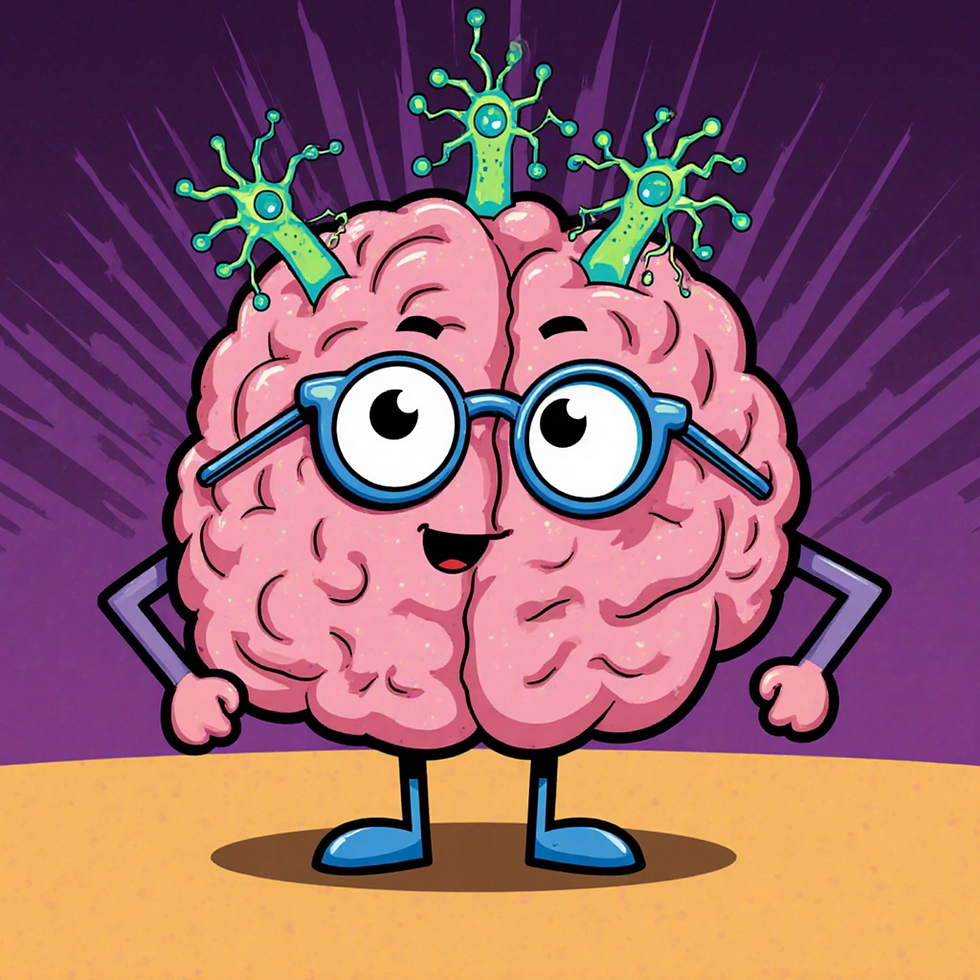🏰 The Towers of Hanoi: The magical puzzle that teaches robots to think!
- Frobo

- Oct 13
- 3 min read
Hello there, future inventor! 👋
Have you ever played a puzzle game that made your brain go “Hang on… what just happened?” Well, get ready, because today we’re diving into a legendary puzzle that’s over 100 years old but still teaches computers and robots how to solve problems. It’s called The Towers of Hanoi!
🧩 What is the Towers of Hanoi?
Imagine you’re a wizard (🧙♀️ or 🧙♂️ — your choice!) standing before three tall towers. On the first tower are a bunch of golden rings, stacked from biggest at the bottom to smallest at the top.

Your mission (if you choose to accept it 🕵️♀️): Move all the rings from the first tower to the third one.
Sounds easy, right? But here are the magic rules:
You can move only one ring at a time.
You can never put a bigger ring on top of a smaller one.
You can use the middle tower to help you — but be careful!
Even with just three rings, your brain has to plan a few steps ahead. With five or six rings, you’ll start feeling like you’re programming your own robot brain! 🤖
🧠 How does this help us solve problems?
When you play the Towers of Hanoi, your brain starts doing something scientists call problem-solving — breaking a big, tricky goal into smaller, easier steps.
For example:
Step 1: Move the smaller rings out of the way.
Step 2: Move the biggest ring to the target tower.
Step 3: Move the smaller rings back on top.
You’re not just playing — you’re thinking like a computer scientist! 💡You’re creating a plan or an algorithm — a fancy word for “step-by-step instructions”.
That’s exactly the kind of thinking that powers Artificial Intelligence (AI)!
🤖 What does this have to do with AI?
AI is all about teaching computers to solve problems — just like you do when you play puzzles!
When scientists train AI, they often start with puzzles like the Towers of Hanoi because:
It helps the AI spot patterns.
It teaches how to make smart decisions.
It shows how to avoid mistakes and find the quickest solution.
In fact, AI researchers sometimes code computers to solve the Towers of Hanoi all by themselves! At first, the computer makes random moves and fails (oops 😅), but then it learns from experience — just like you do when you’re learning a new video game.
This process of learning from mistakes is called machine learning, and it’s one of the most exciting parts of AI.
🌟 Why it’s cool
By playing or coding the Towers of Hanoi, you’re training your brain to:
Think logically 🔍
Be patient 🧘
Plan ahead 🚀
Solve tricky challenges 🧩
And guess what? Those are the exact same skills that engineers, scientists, and AI experts use every day!
The next time you play a puzzle — whether it’s Towers of Hanoi, a maze, or a coding game — remember:👉 You’re not just playing.👉 You’re training to solve problems and tricky challenges!
💡 Try it yourself!
You can play Towers of Hanoi online or build your own with cups, LEGO bricks, or paper rings! Start with three rings, then four, then five… see how your strategy changes each time. And who knows — maybe one day you’ll design an AI that beats everyone at it!
Keep exploring!
Ribbit, ribbit,
//Frobo



Comments